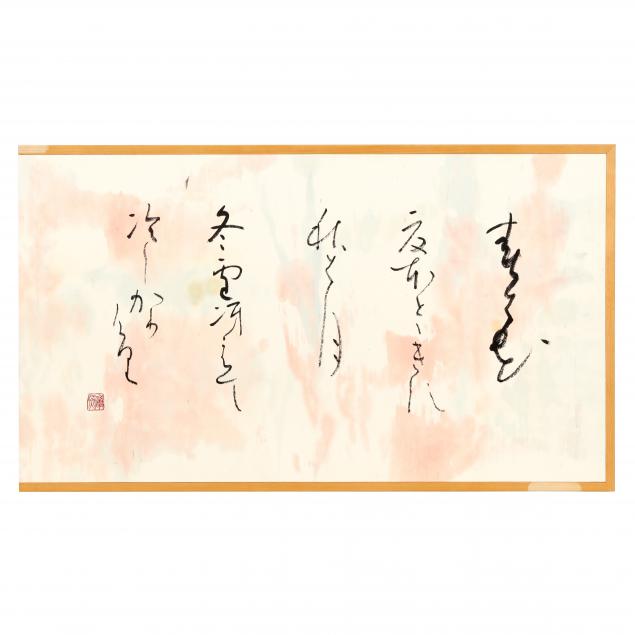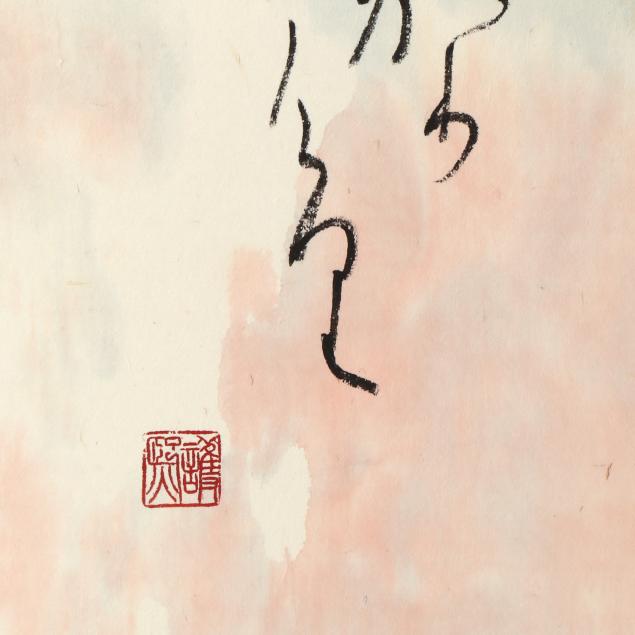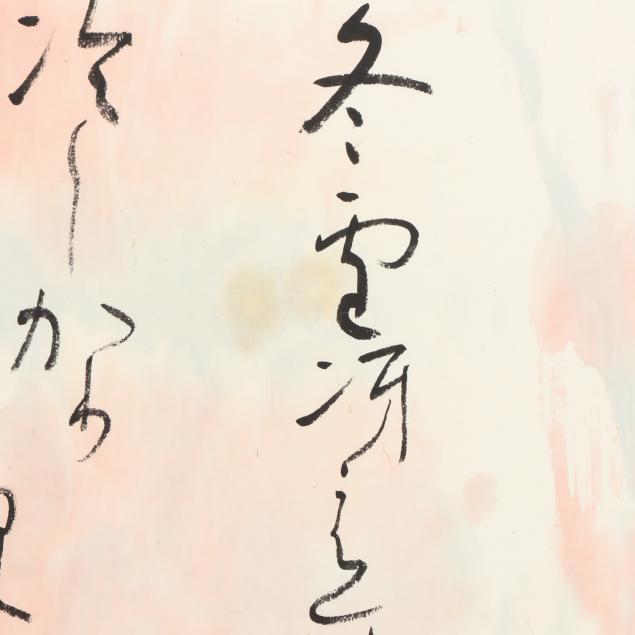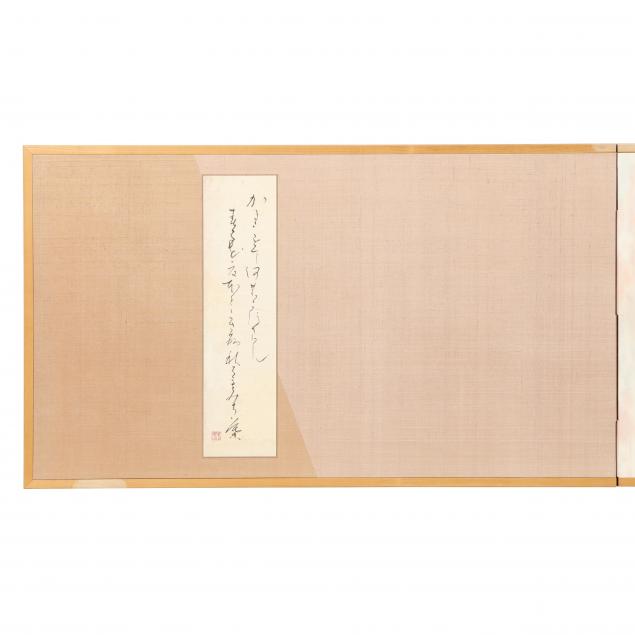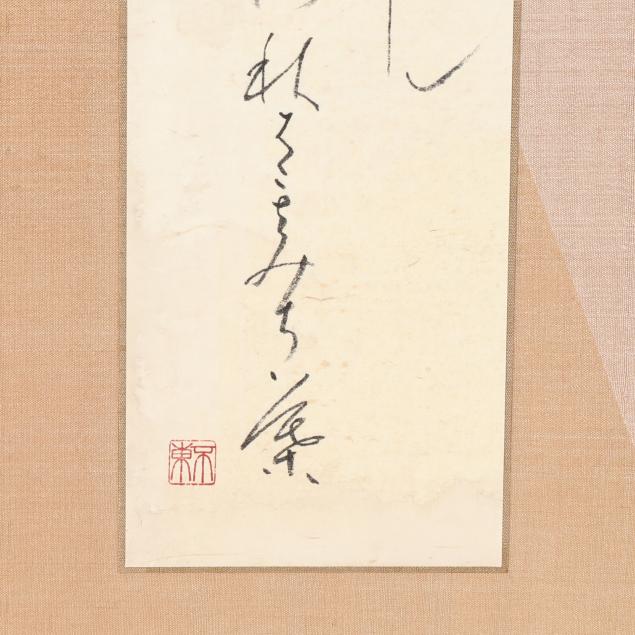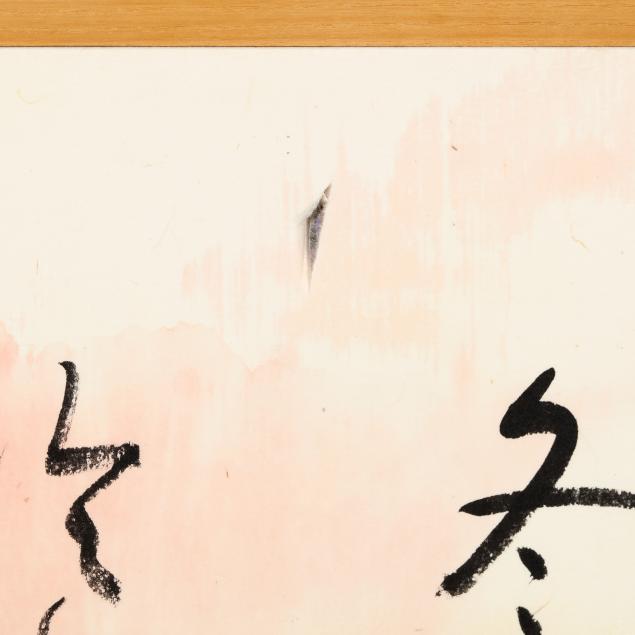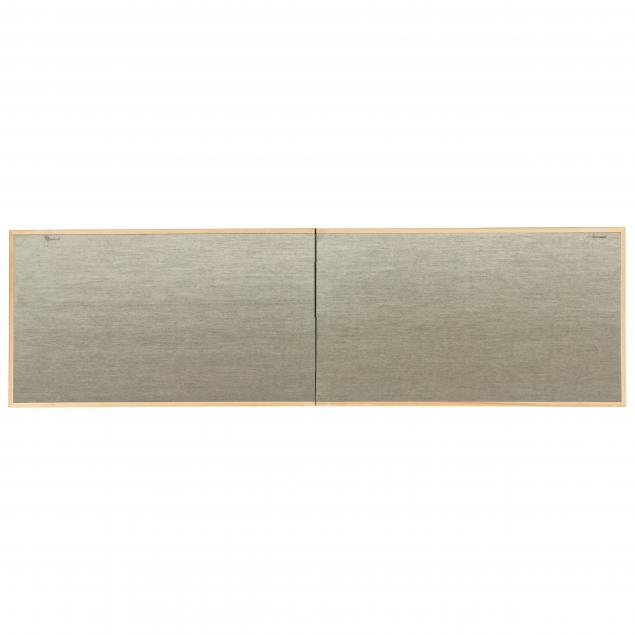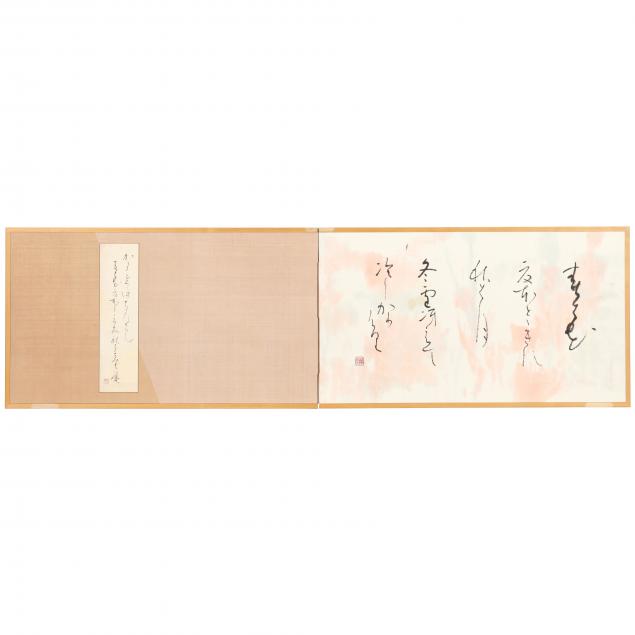
Lot 168
Morihiro Hosokawa (Japanese, b. 1938), Two-Fold Screen with Calligraphy
Explore more items like this one.
Visit our Asian Arts Department Asian Arts
Lot Details & Additional Photographs
The first poem:
The cherry blossoms in spring,
cuckoo in summer,
Moon in autumn,
Snow in winter
clear and cool.
By Dōgen (1200-1253), a Japanese Zen monk who founded Eiheiji in Kanazawa
Second poem:
What keepsake is left, by
Cherry blossoms of spring, cuckoos of summer, Or maples of autumn.
By Monk Ryōkan I1758-1831) of the Edo period, Japan
Morihiro Hosokawa, former Prime Minister of Japan, has established himself as a well respected artist, having international solo exhibitions in Paris, New York, and Beijing. Hosokawa was also given the great honor of painting six fusuma door panels at the Buddhist temple Kennin-ji in Kyoto.
DOA 21 1/2 x 74 in.
From the Estate of the late Diego Cortez, New York and North Carolina
Diego Cortez (1946-2021), an art curator and filmmaker, was a cultural cornerstone in New York City who helped shape the art, music, and film scene from the 1970s forward. Among his incalculable list of accomplishments, Cortez is credited with launching the career of Jean-Michel Basquiat when he included him in his major 1981 exhibition New York/New Wave.
Cortez (née James Curtis), was raised in Geneva, Illinois, and went on to attend Illinois State University and later the School of the Art Institute of Chicago for a Master's degree. He changed his name to Diego Cortez in 1973 when moving to New York in honor of his hometown of Geneva, a Hispanic neighborhood. Early on, Cortez developed and fostered numerous connections with major figures in New York and he established himself as a key player. He worked as a studio assistant for artists Dennis Oppenheim and Vito Acconci and later directed music videos for rock bands Blondie and Talking Heads. He also wrote Private Elvis, a photographic book about Elvis Presley's time in the army in West Germany.
Cortez cofounded the Mudd Club in 1978, a hybrid nightclub/art space in Tribeca that was frequented by celebrities, artists, and musicians. It was on the dance floor of the Mudd Club that he first met Basquiat. In 1981, Cortez curated New York/New Wave, a major avant-garde exhibition at MoMA PS1 in Queens. It featured a new generation of artists as well as art superstars, such as Basquiat, Andy Warhol, Nan Goldin, Keith Haring, Fab Five Freddy, Robert Maplethorpe, and others. New York/New Wave was a turning point in the art world, as it ushered in anti-establishment art forms such as graffiti art and street art.
The transformative ideas Cortez put in motion throughout his life are threaded throughout New York City and beyond. In this collection you will see links between the Cortez as the collector, the artists and makers of these works, as well as the subjects. This selection of objects from Cortez's collection touches upon seminal connections he had throughout his monumental life and career.
Purchased from Koichi Yanagi Oriental Fine Arts, New York, in 2007.
Three areas of lightening to wood frame where hanging hardware had been placed; possible light staining to one side or part of art work design; small puncture to front right hand panel; some wear and one small puncture to reverse of panels.
$800 - 1,200
